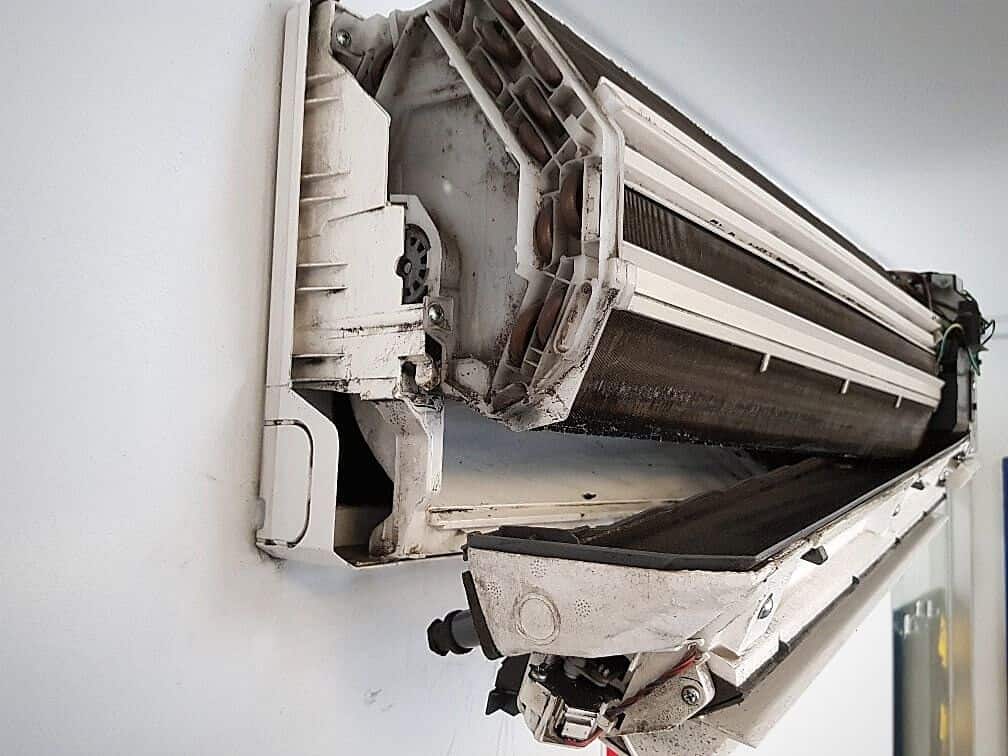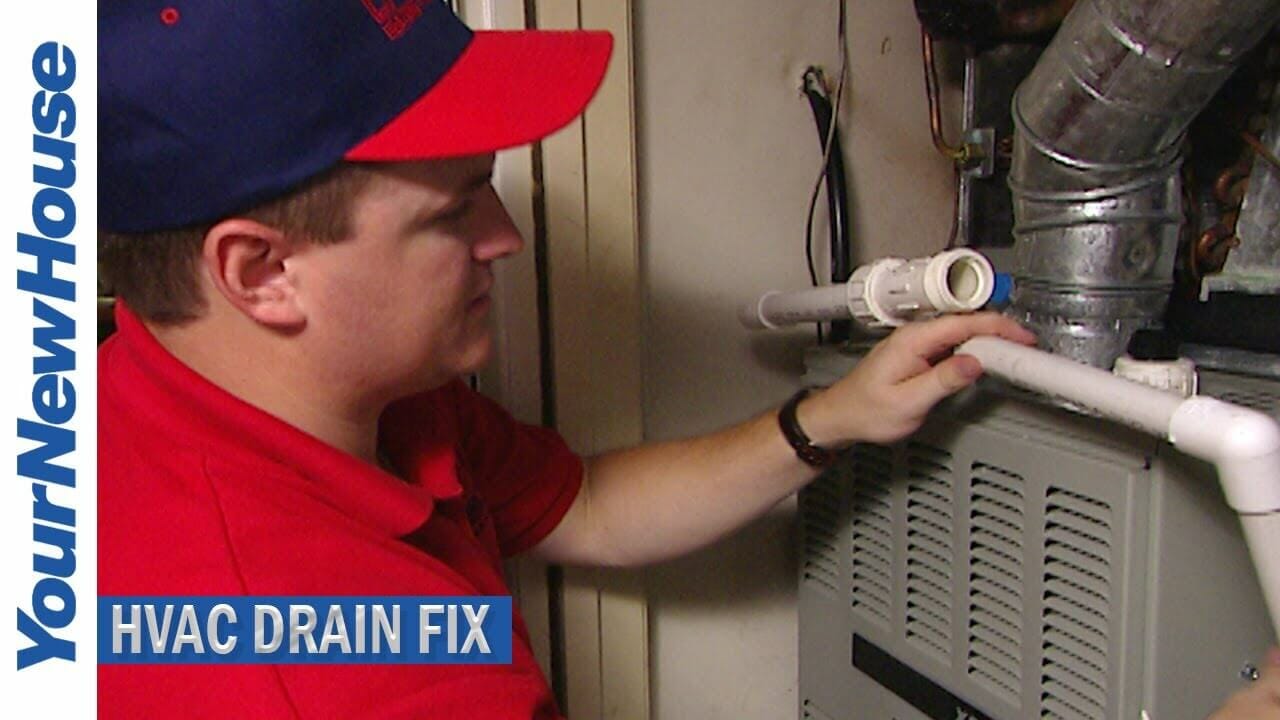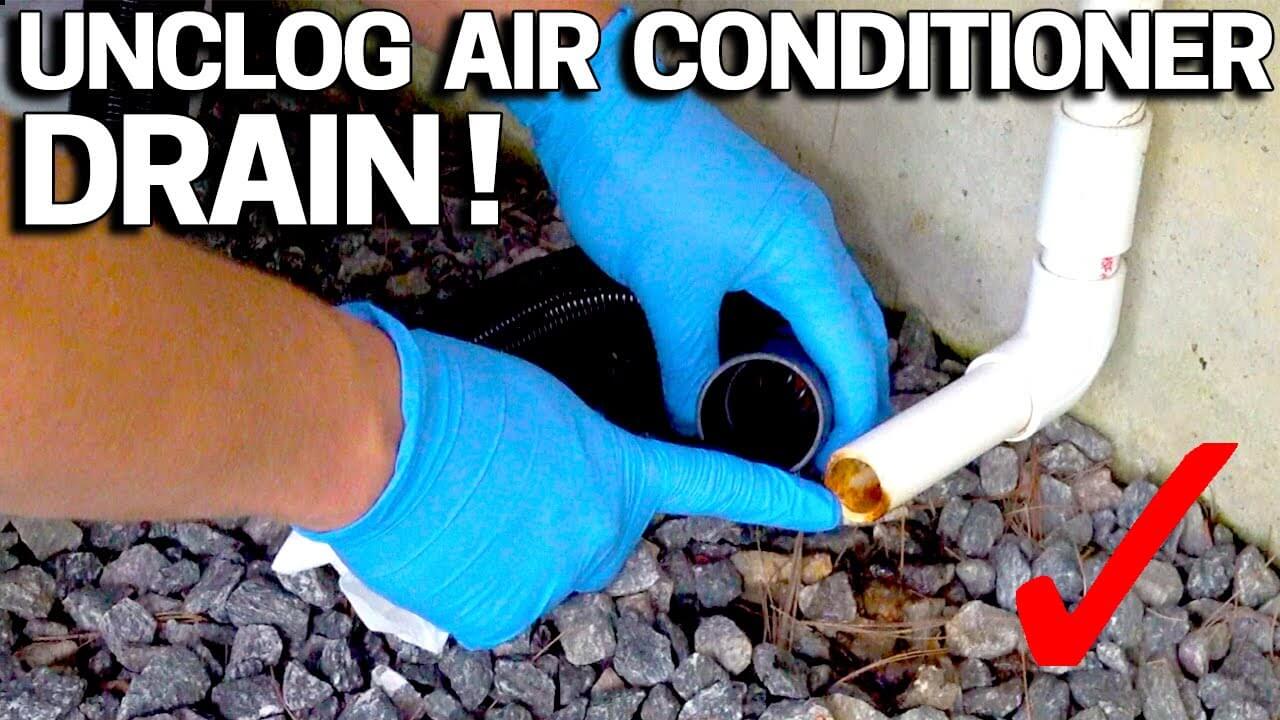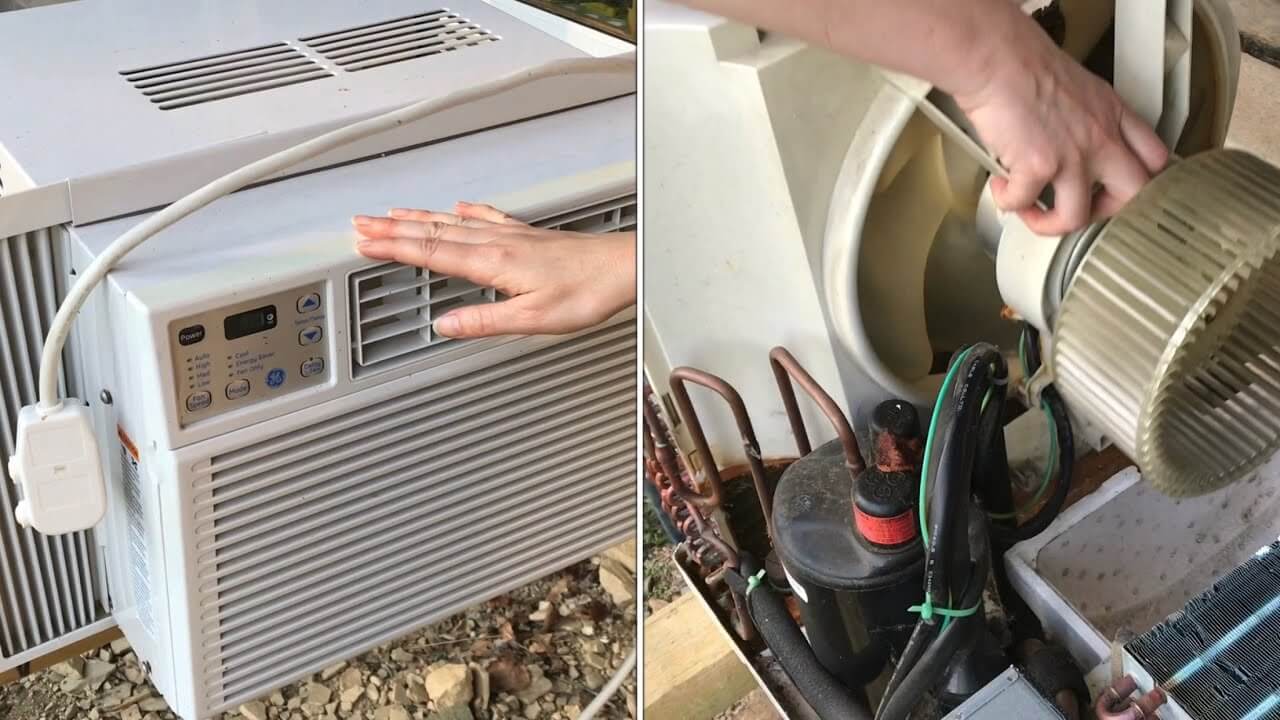Why Is My Air Conditioner Leaking Water Inside?
This common problem with your air conditioner leaking water inside your home is typically experienced in high humidity conditions and can cause significant damage to your home if not tended to ASAP.
Typically, water leaking from your indoor unit, whether it be a ducted split system or a wall-mounted split system, is caused by either a blocked condensate drain pipe or a faulty condensate pump.
A blocked condensate drain pipe is an easy quick fix that you won’t require calling an expensive HVAC technician to repair. But a faulty condensate pump might be out of your technical ability as you’ll have to disconnect and reconnect electrical wiring to replace it.
That said, let’s cover some viable options to repair your leaking air conditioner, and also provide some expert advice to prevent it from happening again in the future.
Why Is My Home Air Conditioner Leaking Water Inside?
Generally speaking, water leaking from your air conditioner is caused by a build-up of dust/dirt within the indoor unit.
Whether the water leak is due to a simple blockage or a faulty condensate pump, this build-up of grime will be your main culprit. With any HVAC fault, you want to find the root cause. So if you want to eliminate any future potential water leaks, you should attempt to keep your AC filters pristine and clean year-round.
When your return air filter collects an excessive amount of contaminants (think dead human skin cells), and you forget to clean them for an extended period of time, your evaporator coil will absorb some of these contaminants, which can cause a blockage.
Your home air conditioner operates most efficiently when it’s producing a healthy amount of condensate run-off.
In other words, the water that is extracted from your indoor unit needs to be clean, or at a later date, you’ll be dealing with either a blocked drain or a faulty condensate pump.
So yeah, clean your return air filter every 3-6 months, and annually disassemble your indoor unit and clean the blower and evaporator coil every 18 months. These simple yet effective DIY tasks will avoid the dreaded mess of a water leak come summer.
Now, if you’re air conditioner is leaking water and isn’t functioning correctly, and is blowing warm air, you’ve unfortunately got much bigger problems than just a blocked condensate drain.
If that’s the case, I recommend you check out our recent in-depth article on how to fix an AC unit not blowing cold air, covering the possible faults and how exactly you should go about resolving them.
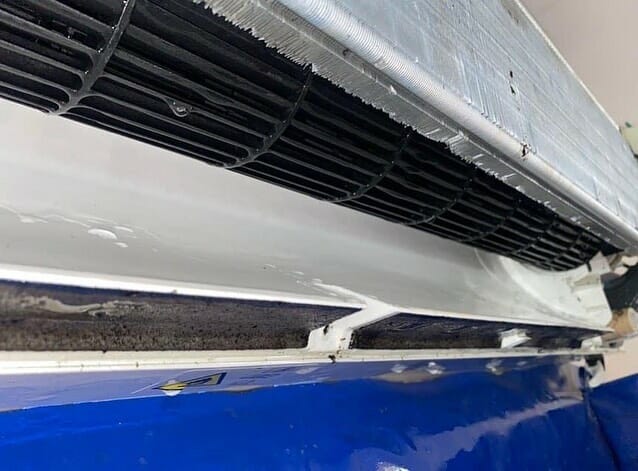
Can We Use Our AC When Water is Leaking from It?
If your AC system is leaking water and you want to continue to use it, you can as long as you have the ability to connect a temporary hose or at least put a bucket under the leak.
I would only recommend the above for wall-mounted split systems that are not fitted with a condensate pump. Condensate pumps that a mechanically seized, will still have voltage to them, and water and electricity don’t play well together. It would be best to isolate the air conditioner from the electrical switchboard or isolator and call in the professionals.
Then again, if we’re talking about a ducted split system that is leaking water from the ceiling space, that’s a hard no!
“If you conduct regular routine maintenance on your home air conditioner and clean your air filter every 12-weeks, you can avoid a host of potential issues, including water leaks due to a blocked drain.”
Jessica Bannister – HVACJess
Most ducted AC units (if they were installed correctly) utilize a drip tray that is designed to catch excessive condensation in the event of a blockage. This last resort is installed underneath the indoor unit, and you don’t want it filling up with water and overflowing, as they are a real drain.
Things can get really messy fast if a drip tray is full of water, so you’d be better served to remove the blockage and drain the drip tray pronto!
So there’s a yes, maybe, and a no for you in one long drawn-out answer. Whether or not you can continue to use your AC when it’s leaking water depends on the type of AC system you own and how it was installed.
Is Leaking AC Water Dangerous?
Well, I probably wouldn’t drink it, but you could probably brush your teeth with it for experimental purposes.
But seriously, when most people think of dangerous AC water, they think of legionnaires’ disease. This is not something the average homeowner will ever have to worry about, especially if your home’s air conditioner is of the refrigerated variety.
Legionnaires’ disease concerns within the HVAC industry relate to large-scale commercial cooling towers that require regular water treatment. Cooling towers house a lot of water and to combat any buildup of bacteria within the water basin of these towers, the water is treated with chlorine dioxide regularly.
Again, this is a non-factor for homeowners with refrigerated air conditioning systems.
While an evaporator drain pan can develop bacteria growth, the water within the drain pan is not (supposed to be) stagnant.
When your home air conditioner is functioning correctly, the condensate water accumulated is drained into a nearby tundish, so any bacteria residue remaining in the drain pan is minuscule.
But, to air on the side of caution, I’d recommend you stick to tap water or even beer if it’s after 5 o’clock.
Note, unless you’re a commercial building owner, cooling towers and Legionnaires = Not your problem.
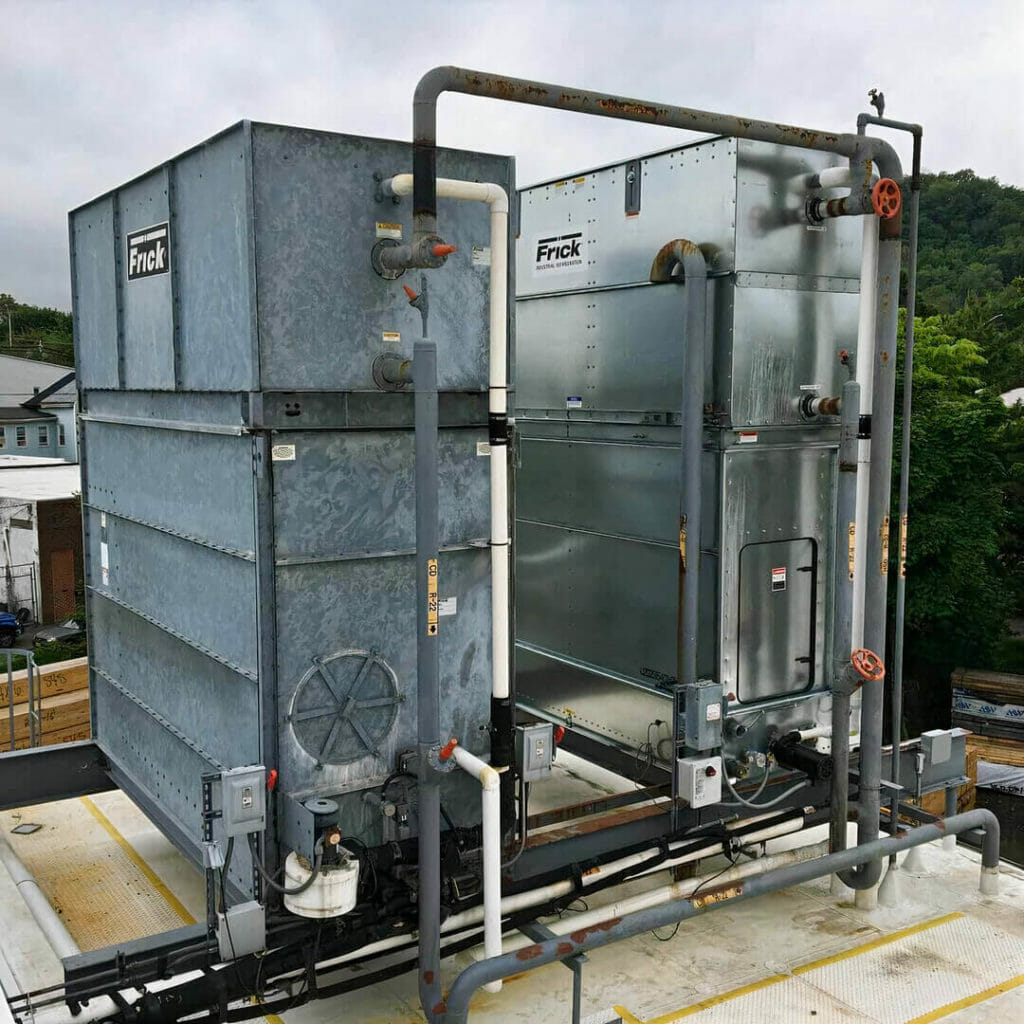
How Do You Fix a Leaking Air Conditioner?
This is easier than you’d think, although, you’re going to need a few hand tools and some HVAC related equipment to get the job done right.
Here’s a list of everything you’ll need to successfully unblock a condensate drain pipe that is causing your air conditioner to leak water:
How to Fix Air Conditioner Leaking Water From Ceiling?
Alright, let’s assume you’ve got your ladder extended and you’re staring at the indoor unit leaking water from your ceiling like it stole your lunch money.
Firstly, you’re going to want to turn your air conditioner off at the main circuit breaker or outdoor unit isolator. If you’re only turning the isolator off at the indoor unit, you’ll cause the system to trip on LP (low pressure) with the indoor fan off and the air conditioner compressor running.
Now that you’ve safely isolated the air conditioner condensing unit outside, you can head back inside into the ceiling space for the time of your life.
Once you’ve crawled back into the ceiling space lugging up what tools and equipment you’ll require, it’s go-time.
You’ll need to follow these exact steps to resolve your AC leaking water:
- Using a Phillips head screwdriver, unscrew the numerous screws are holding the access panel in place to get to the evaporator drain pan
- Using your flashlight, search around the drain pan to locate the outlet port that is connected to the condensate drain pipe
- Next, with your 1/4″ hose that is connected to the nitrogen regulator, stuff it into the drain pan outlet
- Now, with the tee handle on the regulator seated in a counter-clockwise position, turn the nitrogen cylinder valve handle clockwise to on
- You’ll now have a pressure reading on the nitrogen regulator that will indicate the cylinder pressure in both PSI & KPA
- With the 1/4″ hose connected to the regulator and evaporator drain pan inlet, you’ll now want to rotate the tee handle clockwise to clear the drain line
- Continue to rotate the tee handle until you reach a discharge pressure of around 200 PSI and maintain that pressure for around 20-30 seconds
And that is it! This task should take no longer than 5 to 10 mins, and it is without a doubt the most constructive way to clear a condensate drain pipe on an air conditioning system.
While the other DIY techniques we suggest will likely clear an obstruction causing your AC to leak water, you’d never see a professional HVAC using them.
Note, using a wet/dry vacuum and or hose brush is more of a temporary solution, as you’re just not going to be able to clear a drain line without the kind of pressure that nitrogen can deliver.
How to Unclog AC Drain Line in an Apartment?
Five times out of ten, a wall-mounted AC unit in an apartment building will be making use of a condensate pump to drain away condensate water. I know that because I’ve installed thousands of them, and it seems to be (stupid) standard practice.
If you do have a wall-mounted AC leaking water and you think it might have a condensate pump fitted to it, I recommend you go no further. You’d be far better off calling a qualified HVAC technician to assist with conducting these repair works for you.
Honestly, it’s not worth the trouble. By the time you disassemble the indoor head unit, disconnect the fiddly condensate tubing, safely disconnect the electrical wiring, and then remove the pump, you’ve going to have to source another new replacement condensate pump, and then put the darn thing back in again.
So yeah, I’d recommend you leave that for the professionals who’ll do it right one time, in half the time.
Although, if your air conditioning system doesn’t have a condensate pump and it’s just a blocked drain line you’re dealing with, you have some workable options.
Here’s a detailed video explaining the exact steps you need to take to unclog your AC drain line for your air conditioner leaking water in your apartment, using a wet/dry vacuum.
Why Is My Window AC Spitting Out Water?
If you’re experiencing this issue with your window AC spitting water while on cooling mode, it is likely due to your system “over condensation”, causing your AC system to produce excessive amounts of condensation outside of your AC system’s capacity.
Typically, this is caused by user error. If you’ve set your temperature controller’s set point beyond what is reasonably achievable on a high humidity day, components within the AC housing will sweat, including the fan barrel.
If the fan barrel is coated in condensation while rotating, it’s going to propel that water out of the outlet and into the conditioned space. So keeping your AC system’s temperature controller (aka. thermostat) above 72°F on an unpleasantly humid day will prevent this from happening.
AC condensation is part of the operating process in any healthy air conditioning system, but too much condensation will result in leaking water inside your home.
How to Fix a Leaking Window AC Unit?
Thankfully, there’s a lot less involved in terms of effort when it comes to rectifying a water leak with your window air conditioner.
Your window AC unit has a drainpipe outlet inside the housing of the unit which is attached to the evaporator drain pan. You can either blast the inlet drain line from the evaporator drain pan with nitrogen to remove the obstruction or use a suction device on the outlet if you have access to unclog it.
Or, what I’d recommend you do is remove your window AC and clean it thoroughly focusing on the drain pan.
This helpful video provides a step-by-step tutorial for removing & cleaning a window AC unit without the need for too many tools.
Plus, by tackling this rather simple DIY task yourself, you’ll avoid what could be a sizeable bill from a HVAC technician, who’ll probably charge you at least 2 hours of labor to repair it.
In Conclusion
An AC water leak is not something you want to deal with on a hot summer day. As a technician, it was one job I would hate going to as it involves more than just hitting the reset button.
As previously mentioned, if you encounter a faulty condensate pump and you’re not equipped or comfortable replacing it yourself, I’d advise against DIYing it and call in the experts to conduct such complicated refrigeration repair works.
While you might be up for around $400-$500 in repair works, it’s not something that you’ll likely experience again if you’re cleaning your air filter on a regular basis.
The goal is to keep your evaporator coil sparkling clean so that the condensate run-off doesn’t become problematic and obstruct the drain line.
Just keep it simple and don’t attempt any HVAC DIY work you’re not confident you can complete safely. That’s what the pros are for and are always a phone call away.

